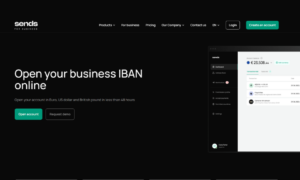2022 became a headache for CFOs. Issues like money access, anti-fraud policies, and cash flow management are only part of a big list that top managers will have to deal with. Couple that with constant talent search and logistics problems, and you get a mix of challenges that slow down the business growth. And that’s not all.
Companies are still getting used to remote work, and these new practices are taking a major role in transforming B2B payments. However, a lot must be done soon – B2B payments is a market with $22 trillion in value and conventional financial institutions like big banks still have a 90% share in that scope. Yet, fintech is taking more ground every year, which has indeed changed the B2B payments landscape. Check out the trends that we will likely see this year:
No More Checks
Checks were popular until very recently. In the US, half of all B2B payments were done with the help of checks only a couple of years ago. Today, the figure is around 40%. It’s still a good amount, but the decline in check use is evident. If we take Europe, checks are almost non-existent there due to the heavy regulation and the requirement to report VAT to state authorities. Electronic money transfers leave records after themselves that are much easier to collect. Hence checks do not work well in that regard.
However, the US is a different story. Checks are accepted everywhere, and for that simple reason, they remain in use. Yet, rapid digitalization will sooner or later abolish paper altogether, thus making checks a burden rather than bliss.
Fintechs Are Taking Over the Market
Check extermination became an ultimate goal for many companies, yet not all utilize the most efficient practices. For instance, banks replace checks with cards that lag behind technological progress. As a result, they don’t have the full set of tech and services that enterprises require to make a shift towards digitalization.
Take a look at the situation where you need a reliable payments vendor together with bank-grade security. Often it’s impossible to recreate everything in-house as it takes too many resources and time. So instead, startups tend to utilize the existing solutions, the combination of which gives birth to innovation.
Adoption of Cards
Cards have taken the payments world by storm. For instance, credit cards offer perks that outweigh the drawbacks. Consequently, more and more people will use cards in the near future.
Customers greatly benefit from cards. Cards let them track their expenses and offer extra cash for tough times. Finally, they are good for battling scammers – transactions can be annulled, and technology like 3DSecure can easily verify a person making a purchase.
It’s also a win for vendors. They get an optimized cash flow and quick and secure payments. Cards also allow access to money transfer data that vendors can use to improve payment processes and roll out new solutions.
Great Blockchain, Questionable Cryptocurrency
Crypto is on track to mass adoption. However, a lot of people remain sceptical and do not fully trust digital currencies. That’s understandable – in the past few months, we saw some cryptos collapsing in a matter of hours. Therefore, we can’t really say now how cryptos will be adopted by fintech in the near future.
What we know is that blockchain offers quick transfers that put big banks at shame. If you plan to make a transaction through SWIFT, it will arrive within 1-3 business days. Using blockchain, you can get your money instantly. That’s a massive difference!
However, blockchain is still in a grey zone. There are no regulations that thoroughly control the transfers, thus slowing down the adoption of this technology by conventional banks or fintech. That is a big challenge.
In a nutshell
B2B payments can’t ignore digitalization. However, unlike B2C payments, where digital money transfers are nothing unusual, B2B payments require a bit more time. Just moving the money from one account to another over the web is not enough. You need security and infrastructure.



































